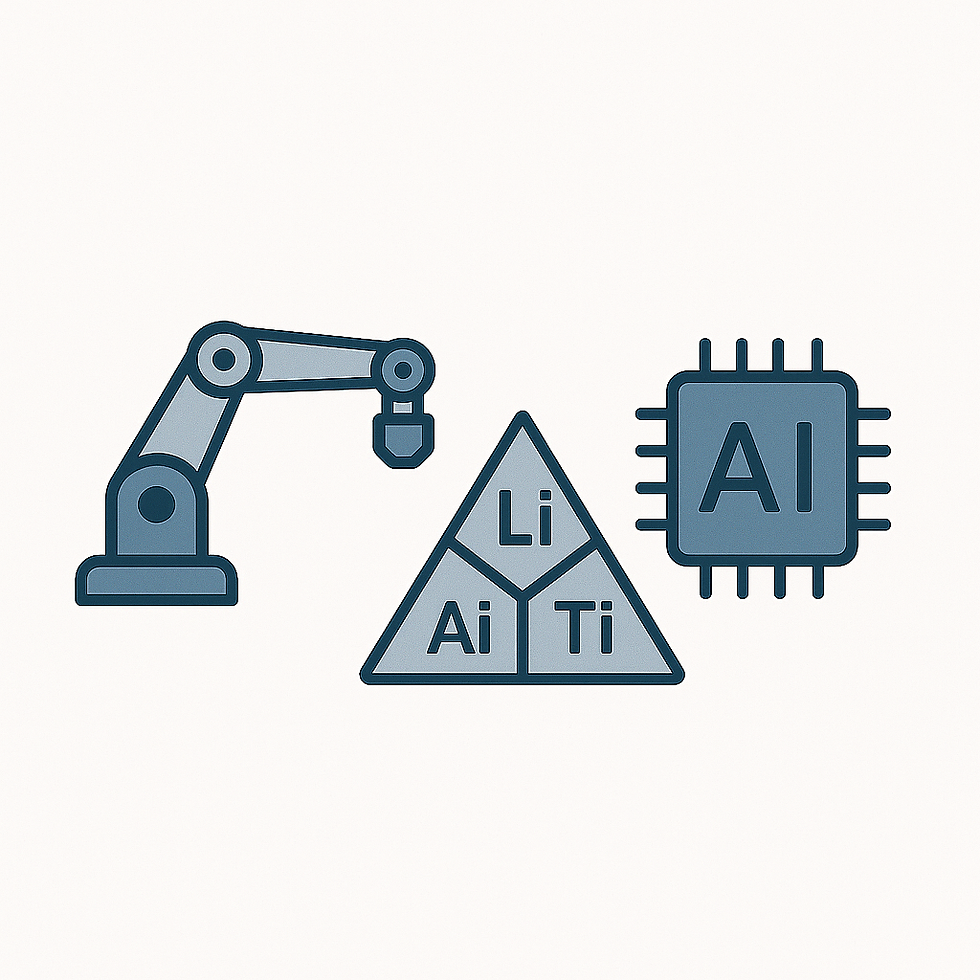Future-Proofing Your Sheet Metal Design: Trends & Innovations
- Ahner Industrial

- Jun 25
- 3 min read

Sheet metal design isn’t static. As manufacturing technologies evolve, so too must our design approaches. Staying ahead of the curve isn’t just about keeping up – it’s about ensuring your designs are efficient, cost-effective, and ready for whatever the future throws at them. At Ahner Industrial, we see these shifts firsthand, and we’ve compiled a look at the trends shaping sheet metal design right now.
Hyper-Automation and Cobotics: Designing for the Robot
Robotic automation isn’t a luxury for big shops anymore. Robotic press brake tending, laser loading, and even collaborative welding stations are becoming increasingly cost-effective for businesses of all sizes. Cobots shorten cycle times, address ongoing labor gaps, and provide a level of repeatability you can truly rely on. To take full advantage of this, designers should consider incorporating robot-friendly datum schemes and generous tool-access clearances into their designs. We’re seeing firsthand how cobot cells can slash brake setup times by as much as 60%, delivering significant productivity gains.
Digital-Twin Workflows: Predicting Performance
Gone are the days of blindly cutting metal and hoping for the best. Shop-floor IoT sensors are now feeding data into simulation twins that mirror real-world press forces, punch wear, and springback. This allows designers to preview tolerance drift *before* a single blank is cut, dramatically increasing first-pass yield. Closing the loop between design and the shop floor is key. Exporting native CAD metadata—bend tables and K-factors—into Manufacturing Execution Systems (MES) and Product Lifecycle Management (PLM) platforms creates a seamless flow of information.
AI and Generative Design: Optimizing for Strength and Weight
Topology optimization algorithms, once relegated to 3-D printing, are now being applied to bendable sheet metal. These tools automatically thicken ribs, strategically place lightening holes, and orient grain, all while respecting minimum bend radii. Imagine a traditional brace compared to an AI-optimized version—27% lighter, without requiring any tooling changes. This level of optimization translates to material savings and improved product performance.
CNC-Driven Adaptive Forming: Precision in Every Bend
Fifth-generation CNC controls are introducing real-time force feedback and predictive bend sequencing, eliminating the guesswork that often plagues design for manufacturing (DFM) processes. As a result, we’re seeing the ability to achieve tighter cut-to-bend tolerances. Designers should now specify critical dimensions *post-bend* rather than flat, and embrace these achievable tolerances.
Advanced Alloys: Beyond Traditional Steels
The push for increased EV range and reduced aerospace weight is driving demand for high-strength steels (HSS), aluminum-lithium blends, and titanium-grade sheet. Each alloy presents unique challenges, affecting bend allowances, grain cracking risk, and fastener selection. It's important to remember that "mild-steel rules" simply don't apply anymore.
Sustainability: Designing for a Circular Economy
Sustainability isn’t just a trend; it’s becoming a core requirement. From closed-loop scrap recovery to energy-efficient laser cutting, low-carbon credentials are influencing purchasing decisions, especially in LEED and EU taxonomy projects. Consider these steps when designing: declare recycled content percentages on prints, design for easy disassembly, and specify coatings that can withstand alkaline washes.
Feature-Rich CAD Toolsets: Streamlining the Design Process
CAD software vendors are constantly improving their tools. New features like auto-notching for hemming, flat-pattern collision detection, and stock-aware Bills of Materials (BOMs) reduce ECO loops and simplify handoffs to the shop. Experiment with features like the new "bend notch" wizard, which can save valuable design time.
Modular Architecture: Adapting to Future Needs
Customers increasingly want ultra-fast model refreshes – think configurable kiosks or battery enclosures. Designing sheet metal using modular components – common hole grids, snap-fit edges – enables swapping modules without re-tooling. This modularity also offers a safety net against future compliance shifts, like battery fire partitions or RF shielding requirements.
We’re here to help you navigate these shifts and ensure your sheet metal designs are future-proofed.
Request a quote or lets discuss your next project.




Comments